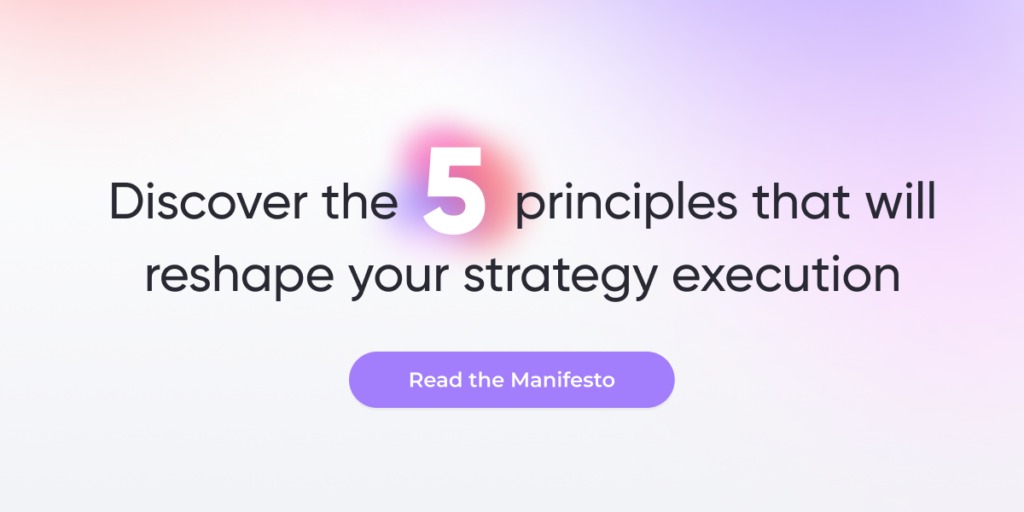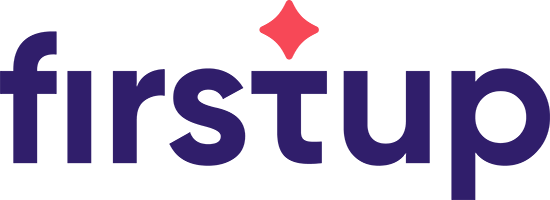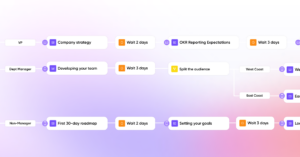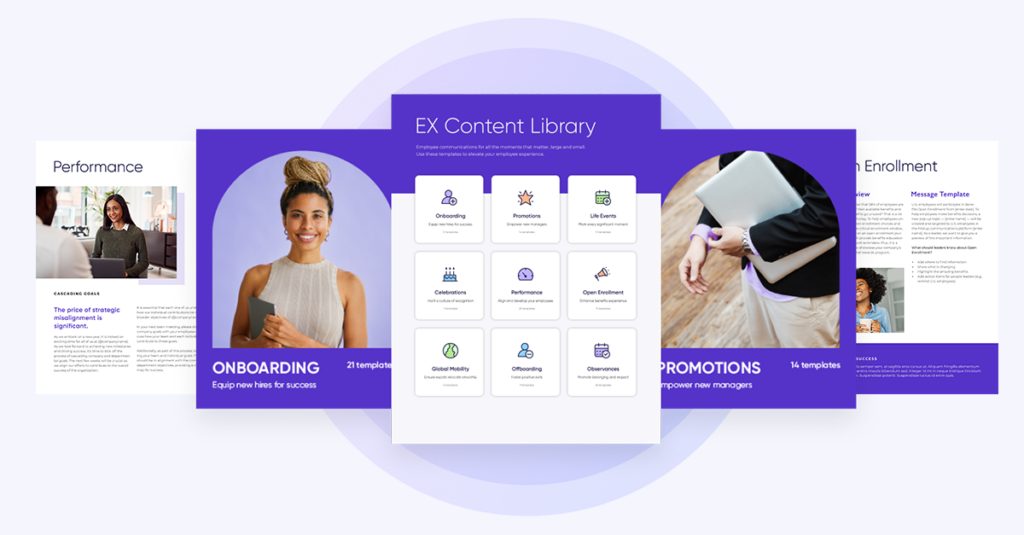Change is now a constant in the modern workplace—but successful change management isn’t.
A famously cited McKinsey report reveals that only 30% of transformations are successful. With such a high fail rate, organizations need a repeatable, scalable change management strategy that can reduce friction, build alignment, and help employees navigate change with confidence. Not just once, but every time.
In this post, we break down why you need a defined, repeatable change management process, what a successful change management process looks like, and tips (plus mistakes to avoid) to build organizational muscle for change.
Key Insights
- Only 30% of organizational transformations succeed, making repeatable change processes essential
- 40% of employees feel anxious about workplace changes while 43% doubt their company’s change readiness
- Change management processes provide reusable frameworks unlike one-time project plans
- Defined processes reduce uncertainty, increase confidence, align teams, and enable continuous improvement
- Core steps include evaluating need, developing approach, communicating framework, executing, and reinforcing outcomes
- Communication must be tailored and personalized rather than generic to prevent disengagement
- Building change capability requires investing in tools, embedding change in culture, and treating it as ongoing practice
What is a change management process?

A change management process is a structured series of stages organizations follow to initiate, implement, and sustain organizational change. It’s the framework that supports all types of transformations, from deploying new digital tools to shifting leadership priorities to reshaping workplace culture.
This process is different than a one-time project plan. It’s a repeatable system you can rinse, refine, and repeat to align key stakeholders, structure communication, reduce disruption, and improve how your organization manages change in the future.
Above all, a successful change management process is flexible. Whether you’re making incremental updates or leading enterprise-wide transformation, a clear but adaptable process allows your teams to adapt faster and with more—without reinventing the wheel every time.
Why you need a defined change management strategy
Change management is hard—emotionally, operationally, and strategically. Without a defined process to guide teams and structure the experience, employees can be left feeling confused, overwhelmed, and even pessimistic about future initiatives.
A defined change management process provides structure and transparency to help both employees and leaders:
- Understand what’s happening and why
- Know what to expect at each stage
- Feel supported as they transition
- Build change management capabilities over time
Here’s a closer look at the key benefit of having a defined change management process:
1. Reduce uncertainty
According to a survey from Oak Engage, 40% of employees feel anxious about changes at work. When teams don’t know what organizational change are coming or how they’ll be affected, it’s easy for fear and anxiety to set in.
A clear change process cuts through that uncertainty and helps take the sting out of organizational change. It gives employees a familiar, recognizable roadmap they can rely on each time organizational change occurs, ensuring stability, clarity, and direction when uncertainty threatens to derail momentum.
2. Increase confidence
In the same study, 43% of employees say their company isn’t prepared to effectively manage organizational change. Similarly, a McKinsey survey found that less than one-third of respondents call their companies’ recent transformations successful.
That’s not a sign of strong change leadership or operational readiness—and when employees don’t believe in your organization’s ability to lead organizational change effectively, confidence (and morale) takes a hit. But by developing a known, repeatable process to spearhead new change initiatives, you can build trust, anticipate friction, and proactively address employees’ concerns to buy-in and readiness for what’s ahead.
3. Align teams
Resistance is another common obstacle to organizational change with over one-third (37%) of employees admitting they’re resistant to change. A defined change management process can help you overcome resistance by engaging employees from the start and creating space for feedback.
With a process that identifies stakeholders early, creates space to address concerns, ensures visibility into next steps, and reinforces communication with clear, personalized messaging, you can align all teams from—middle managers to the frontline—to increase buy-in, reduce friction, and accelerate change adoption.
4. Support continuous improvement
Organizational change management is never a one-step event. Instead, it’s an ongoing process, requiring ongoing feedback, reflection, and optimization.
A well-defined change management process includes built-in feedback loops, performance checkpoints, and lessons-learned sessions, giving your organization a predictable, systematic way to reflect, iterate, and improve execution with every new change initiative.

Why a repeatable change process matters
Change management plans are an important part of any change initiative—but don’t forget that these plans are single-use. A repeatable change management process, on the other hand, gives your organization a reusable framework you can apply to lead, manage, and sustain change initiatives—again and again.
Here’s why that matters:
1. Consistency
With a repeatable, known process, every employee knows what to expect when it’s time for change, whether that’s onboarding a new tool, redesigning workflows, or rolling out new strategic priorities.
From leaders to middle managers to remote employees and frontline workers, a consistent change management process ensures everyone follows the same roadmap and speaks the same language to accelerate alignment, reduce confusion, and drive smoother execution.
2. Reduced friction
When employees can understand the “why” behind changes, receive tailored training sessions and guidance, and engage in a two-way feedback dialogue, resistance goes down. Unfortunately, this kind of clarity and support isn’t the norm.
When analyzing a random sample of working adults, Gallup’s employee-engagement indicator revealed “less than half of US employees said they kn[o]w what’s expected of them at work.”
With a defined change management process, you give employees the structure and context to move forward with a clear sense of purpose and understanding, empowering them to contribute confidently, adapt quickly, and trust that leadership is guiding change with intention.
3. Faster buy-in
Change fatigue isn’t just a buzzword; it’s a real organizational threat, draining morale and slowing change momentum.
In fact, in a Gallagher report on employee experience and internal communications trends, employees say they’re “tired of endless change,” a worrying trend that indicates people are burnt out from poor communication, unclear priorities, and inconsistent processes.
By using a repeatable, known framework, your organization can make new initiatives feel more familiar and more manageable, helping alleviate stress and keeping employees engaged and on board. Plus, the more you apply the change process, the more efficient and intuitive it becomes, building confidence and organizational resilience with every cycle.
5 core steps of the change management process
There’s no one-size-fits-all playbook for effective change management. Every organization is different, and every change initiative brings its own challenges. But as you build your approach, these five core steps can provide a proven foundation:
1. Evaluate and identify the need for change
Every successful change initiative begins with a clear “why,” i.e., well-defined drivers and goals. Without a compelling reason, it’s harder to align teams, build momentum, and rally organizational support for meaningful, sustainable results.
To get clear on your “why,” start by evaluating:
- Internal performance metrics
- Customer feedback
- Market or regulatory shifts
- Employee pain points
Whether your organization is responding to declining engagement, introducing new tools, preparing for a merger, correcting inefficiencies, or addressing other critical challenges, defining the purpose upfront will create the clarity needed to guide decision-making that supports lasting success.
2. Develop a high-level change approach
A change management plan includes a detailed description of the change, stakeholder roles, resources, timeline, and key performance indicators. But before you build a detailed plan, take time to outline a high-level, directional strategy. This early blueprint will set expectations, scope, and guardrails for the change initiative.
For instance, your high-level change approach should define:
- Who will be impacted
- The broad timeline
- Current organizational readiness
- Known risks and blockers
This step isn’t about planning every detail or assigning tasks. Instead, it’s where you’ll create the big-picture strategic vision to inform a success planning phase.
3. Communicate the change framework
Communication is the foundation of successful change—but it’s not always done well. In one study, only 56% of leaders could name their company’s top priorities. Among direct reports, that number dropped to about 33%.
Without clear communication, your change initiative—no matter how small—can’t gain traction. So as part of your high-level change management strategy, take time to communicate:
- What change is coming
- Why this matters and how it fits into broader organizational goals
- How it will happen
- What employees can expect at each stage
4. Execute the plan and track progress
Now is the time to turn your attention to the more detailed change management plan. This is where strategy becomes action. Specifically, you’ll:
- Align stakeholders
- Build a blueprint for change
- Conduct change readiness sessions
- Launch an early adopters program
- Roll-out communications and training programs
- Recognize employee achievements
Continuous monitoring also plays an integral role in sustainable organizational change management. Beyond tracking performance metrics, you should also pay attention to employee engagement, feedback, and adoption rates. These more qualitative insights can uncover hidden roadblocks and inform adjustments needed to improve future initiatives.
5. Reinforce the change and institutionalize learnings
Change isn’t successful until it sticks. That’s why change management must include intentional steps to reinforce progress, embed new behaviors, and capture learnings for future projects:
For example, reinforcement might include:
- Recognizing wins
- Sharing results and impact
- Adjusting processes and policies to reflect the new way of working
- Documenting lessons for future change efforts
Institutionalizing change helps ensure you don’t backslide and revert to old habits. It also creates a feedback loop to ensure the next initiative benefits from what you’ve learned.
Boosted engagement
3 change management models that support the process
While your organization will develop a unique change management process tailored to your own culture and business goals, established models can offer proven structures and insights that guide your approach.
These are three widely used change management frameworks that help organizations lead change more effectively:
1. The ADKAR model
The ADKAR Change Management Model is a people-focused change management framework founded on five building blocks:
- Awareness: inform everyone involved of the change, why it’s happening, and the intended effects
- Desire: inspire motivation, excitement, and buy-in for the change
- Knowledge: give employees the information and guidance they need support the change
- Ability: empower employees to use new tools and resources to act on the change
- Reinforcement: ensure employee adoption and “sticky” change—and avoid backsliding into old habits and mindsets
Developed by Jeff Hiatt in the 1990s, the ADKAR model is still a go-to framework to help organizations guide individuals through successful change adoption, getting employees enthusiastic, educated, and equipped to sustain new behaviors in day-to-day work.
2. Lewin’s change model
Lewin’s change model is a simple, three-step framework that aims to change the status quo with minimal disruption.
- Unfreeze: Create awareness about the change and prepare teams for disruption
- Change: Implement the change
- Refreeze: Reinforce new behaviors for long-term stability
Created in the 1940s by psychologist Kurt Lewin, this model compares organizational change to an ice block: An ice block can’t be forced into a new shape without breaking. Similarly, to effect meaningful change, Lewin says organizations must first break down existing structures to make way for new behaviors.
3. McKinsey’s 7-S framework
The McKinsey’s 7-S Framework maps the main factors that influence an organization’s ability to change. With no specific, chronological sequence to follow, this framework suggests that all seven elements should be equally prioritized to enable successful change.
The seven elements are:
- Strategy: a long-term plan to meet organizational goals and gain a competitive market advantage
- Structure: how teams, roles, and responsibilities are organized and interconnected
- Systems: the day-to-day processes and workflows that keep your organization running
- Style: leadership approaches and management cultures that shape decision-making and communication
- Staff: all employees and talent supporting your organization
- Skills: the core competencies and capabilities that drive performance
- Shared Values: the shared cultural norms and underlying beliefs that guide behavior and decision-making
Written by former McKinsey consultants Tom Peters and Robert H. Waterman Jr. in their 1982 book In Search of Excellence, this seven-step framework emphasizes that effective change requires a holistic approach that integrates people, processes, and purpose.
5 Cs of change management
Developed by Dr. Liz Bywater, PhD, the 5 Cs of Change Management offer a practical framework for successful change management, focusing on communication and leadership as key levers that influence how change is received and adopted.
These are Bywater’s recommendations for leading change:
- Communication: Communicate change consistently and transparently across multiple channels to keep people informed, engaged, and connected with strategic vision.
- Context: Explain why change is happening and how it connects to broader business goals to help employees understand their individual roles in the bigger picture.
- Clarity: Reduce resistance by providing clear direction, outlining expectations, and establishing timelines to build understanding and confidence.
- Challenge: Inspire teams to embrace change framing it as an opportunity with meaningful rewards and personal growth potential.
- Consequences: Reinforce both the positive outcomes and the risks of inaction to drive accountability and create a sense of urgency that spurs adoption.
Building organizational muscle for change
Change isn’t a one-off project; it’s an organizational capability. And the more your organization rolls out change initiatives and learns from each one, the better you’ll execute the next
To build organizational muscle for ongoing transformation, focus on strengthening your communication infrastructure, creating a change-ready culture, and empower the right people to lead change management.
1. Invest in people and tools
Communication is an essential part of change. To that end, your organization should prioritize investments in the right tools—and the right people—that can clearly communicate and champion new change initiatives.
Most importantly, change communication must be tailored—not just broadcast. Otherwise, you risk employees tuning out, disengaging, or missing your message entirely. According to McKinsey, “senior leaders are nearly 20% more likely than people in other roles to believe that their transformation’s goals have been adapted to relevant employees across the organization.”
Don’t assume your messaging is landing—make sure it is. An intelligent communication platform like Firstup helps you reach every employee with the right message, at the right time, in the right place. When you’re working to drive adoption and keep change momentum alive, this level of precision and personalization matters.
2. Embed change in your company culture
When change is built into your organization’s regular workflows—not treated as a rare disruption—it becomes easier to manage and less stressful for employees.
To embed change as an ongoing normal part of your organization’s workflows, create routines and behaviors that normalize and support transformation, such as:
- Incorporate change-readiness goals into leadership development
- Recognize and reward adaptability in performance reviews
- Build feedback loops into every stage of change
- Share “lessons learned” from past initiatives across departments
When change is expected—not dreaded—it creates a workplace culture where people are better prepared and faster to adapt.
3. Build a diverse change management team
Of course, change leadership is at the helm of change management initiatives—but leadership shouldn’t be the only party involved. By bringing in cross-functional voices, you can surface blind spots, enable more well-rounded decision-making, and increase buy-in and adoption across the board. After all, when employees feel included in change design, they’re less likely to push back—and more likely to support change and help others do the same.
As you build your change management team, bring in contributors from departments like HR, IT, and operations to design the plan, pressure-test assumptions, and guide rollout from multiple perspectives.
4. Embed change within the flow of work
For change to succeed, it must feel natural—not disruptive. That’s why the most effective change management processes embed change communication and support directly into employees’ everyday workflows, where work is already happening and attention is already focused.
- Meet employees where they are: Deliver updates and resources in the message channel they prefer, whether that’s email, mobile notifications, or collaboration platforms like Slack or Teams.
- Foster a transparent culture: Prioritize openness and clarity to make it easy for employees to ask questions and share feedback without hesitation.
- Support adaptation, not just awareness: Don’t just announce change; equip employees to role-based guidance and contextual support.
When change becomes part of how things get done—not an interruption to it—you’ll see higher engagement, smoother transitions, and stronger outcomes.
Common pitfalls to avoid when designing a change management template
In the rush to get started, it can be easy to overlook key elements when creating your change management process. In order to create a template that you can truly rinse, refine, and repeat across different initiatives, watch out for these common missteps:
- Starting without a plan: A vague or undefined process leads to inconsistent execution and confusion when change begins.
- Leaving out middle managers: These frontline managers are critical connectors between leadership and employees—and excluding them from process design can mean missed insight or alignment.
- Relying on generic messaging: If your process doesn’t plan for personalized, role-specific communication and support, employees may disengage and adoption will lag.
- Overlooking the role of communication: An effective change management process is founded on regular, tailored, multi-channel communication that keeps employees signed and informed throughout the lifecycle of change.
- Failing to plan for feedback and iteration: Without structured feedback loops, your process can’t evolve—or get more effective with each use.
- Treating change as a project, not a practice: Don’t assume one plan will serve your organization forever. Your change management process should be built for repetition, reflection, and continuous improvement.
Change management plan vs process: know the difference
Change management is a systemic approach designed to help organizations prepare, support, and help individuals, teams, and leaders adapt to organizational change. To lead successful change initiatives, you need both a change management plan and a change management process.
- Change management process: the high-level framework that outlines how you should approach and manage change in your organization.
- Change management plan: the customized roadmap for a specific initiative, tailored to scope, key stakeholders, and desired outcomes of that particular change
For a deeper look at how to develop a change management plan template, see how to craft a winning change management plan in 6 essential steps.
Why you need both:
- Use your change management process to create consistency, reduce confusion, and scale change capability across your organization.
- Use a change management plan to align key stakeholders, execute, and measure results for each unique initiative.
Deliver a hyper-personalized employee experience at scale
Conclusion: create a communication strategy to make each change initiative a competitive advantage
Change is inevitable. The question is: Will your organization react to it or lead it?
With a defined, repeatable change management process, you can align teams, reduce employee anxiety, increase adaptability, and build lasting organizational resilience to lead, scale, and thrive through any transformation.
At the heart of every effective change management process is personalized communication. As a core pillar of your change management strategy, targeted communication helps you create the clarity and connection employees need to stay engaged and move forward with confidence.
Learn how to use Firstup to integrate right-time, right-channel messaging into your change management process to ensure employees feel informed, supported, and empowered to embrace change—at every level and in every role.
Download PDF








